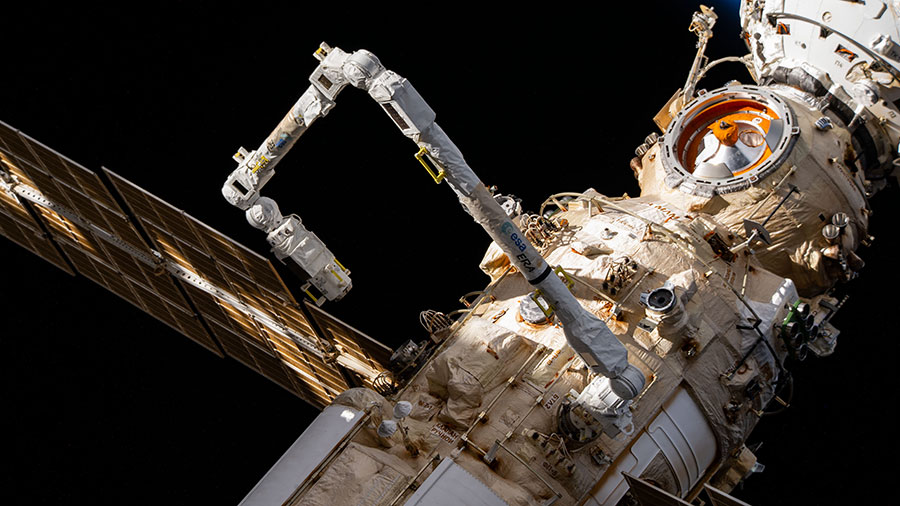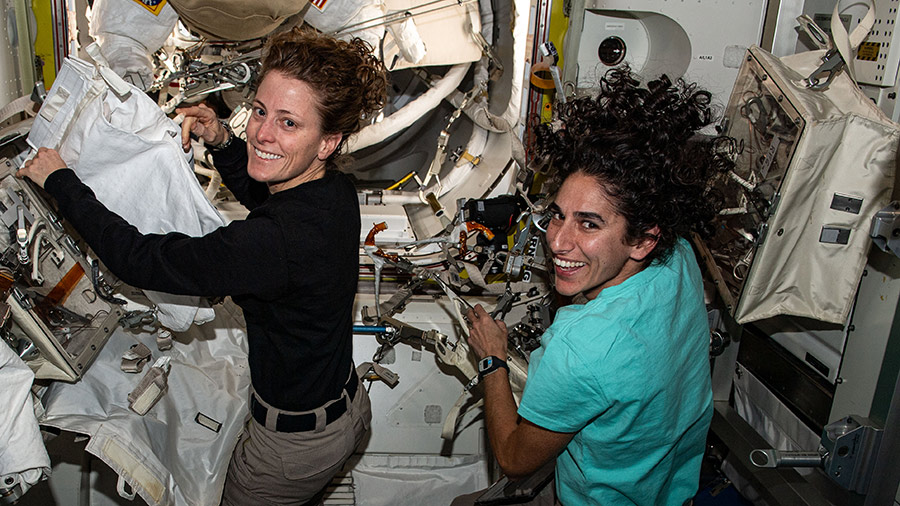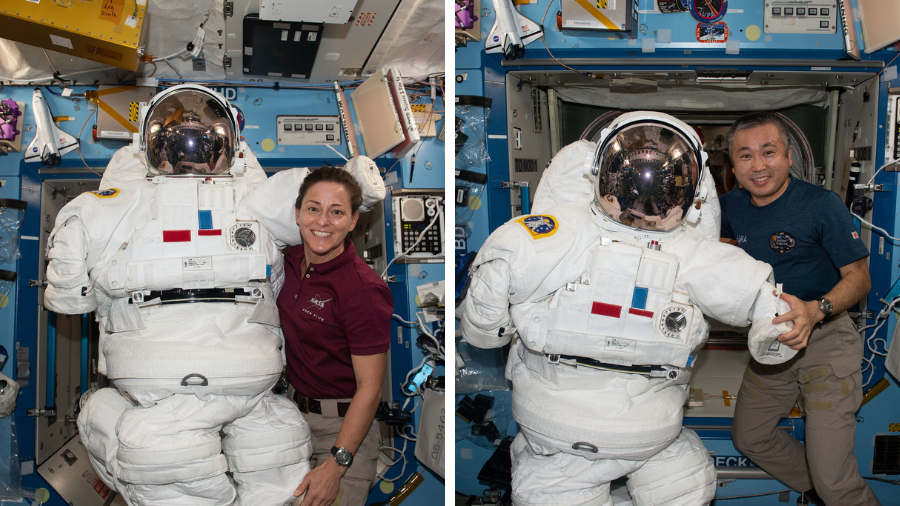
The International Space Station’s population is back down to seven as Monday saw the departure of NASA’s SpaceX Crew-7. The seven orbital residents of Expedition 70 spent Wednesday conducting a variety of human health research, while four crew members continue to adjust to life in space.
Astronauts Jasmin Moghbeli of NASA, Andreas Mogensen of ESA (European Space Agency), Satoshi Furukawa of JAXA (Japan Aerospace Exploration Agency), and cosmonaut Konstantin Borisov of Roscosmos undocked from the forward-facing port of the Harmony module at 11:20 a.m. EDT Monday, March 11 before splashing down off the coast of Florida at 5:47 a.m. Tuesday, March 12. The quartet’s return to Earth marks the end of their six-month microgravity research mission.
Ahead of departure, Mogensen passed over command of the orbiting laboratory to cosmonaut Oleg Kononenko on Sunday, March 10. Now Commander, Kononenko will spend a few months more in space before heading back to Earth.
In the Columbus Laboratory Module, first-time station resident Jeanette Epps set up Kubik, a controlled-temperature incubator that is used to study biological samples in microgravity. The NASA Flight Engineer then moved onto some orbital plumbing tasks in the evening, before joining Flight Engineer Matthew Dominick for some crew orientation activities.
Dominick, also first-time station resident from NASA, collected blood samples in the morning for ongoing human health investigations in low-Earth orbit. By conducting human health research, doctors and scientists on Earth will gain a better understanding of how the body adapts to space. The data could be used to advance future science as missions stretch beyond low-Earth orbit.
Human health studies were also a main focus on Wednesday for Flight Engineers Michael Barratt and Loral O’Hara of NASA. The duo completed some tasks for the CIPHER investigation. CIPHER, or Complement of Integrated Protocols for Human Exploration Research, is an all-encompassing, total-body approach that examines how humans adapt to spaceflight. In the afternoon, Barratt set up an ultrasound scanner and blood pressure measurement gear to conduct scans on O’Hara. In the evening, Barratt had his neck, clavicle, shoulder, and back of the knees scanned by Dominick, using another ultrasound scanning device.
Barratt and O’Hara also tackled some spacesuit prep on Wednesday. The duo removed and replaced components on spacesuits, including the water line vent tubes. Spacesuit work will continue throughout the week as the crew prepares for a round of spacewalks scheduled for later this year.
Over in the Roscosmos segment, Flight Engineer Alexander Grebenkin replaced condensate pump lines in the ventilation system before completing some crew orientation tasks as he continues to adjust to life in microgravity. Kononenko received an ultrasound eye exam guided by Flight Engineer Nikolai Chub of Roscosmos.
Learn more about station activities by following the space station blog, @space_station and @ISS_Research on X, as well as the ISS Facebook and ISS Instagram accounts.
Get weekly updates from NASA Johnson Space Center at: https://roundupreads.jsc.nasa.gov/
Get the latest from NASA delivered every week. Subscribe here: www.nasa.gov/subscribe



